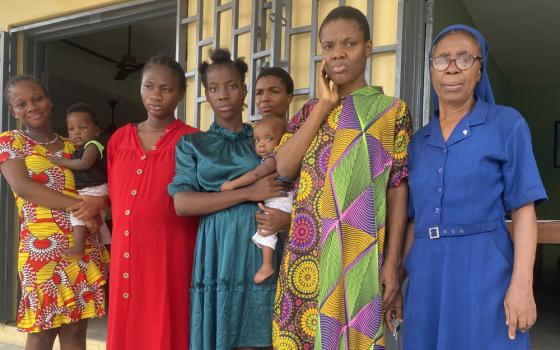
Beatification is sure to spark interest in just who Oscar Romero was, why he was killed, who killed him and what all of this means for the church today as poverty and repression present the same challenges to us that he faced in El Salvador in the late 1970s. The following books belong in every parish and school library to start the conversation about these important questions.
 Oscar Romero and the Communion of the Saints: A Biography, by Scott Wright, with photos by Octavio Duran (Orbis, 2010), is both a personal witness and a powerful introduction to Romero’s life, told within the larger story of the Salvadoran church and its many other martyrs, now part of the “communion of saints.” The author lived in El Salvador during the 1980s, working with refugees and later as part of what was known as the “pastoral accompaniment,” people from the United States and other countries who came to El Salvador to help shield refugees trying to return to their homes as the civil war was ending. In a phone interview with NCR, Wright said he compiled the book to help Americans understand why Romero and the church of El Salvador are so important for us 30 years later: “In our post-9/11 world, facing our own risks and challenges with the economy, immigration and terrorism, the Salvadoran experience can show us how to be church, how to assess our own social realities and those of the poor in the light of the Gospel,” he said.
Oscar Romero and the Communion of the Saints: A Biography, by Scott Wright, with photos by Octavio Duran (Orbis, 2010), is both a personal witness and a powerful introduction to Romero’s life, told within the larger story of the Salvadoran church and its many other martyrs, now part of the “communion of saints.” The author lived in El Salvador during the 1980s, working with refugees and later as part of what was known as the “pastoral accompaniment,” people from the United States and other countries who came to El Salvador to help shield refugees trying to return to their homes as the civil war was ending. In a phone interview with NCR, Wright said he compiled the book to help Americans understand why Romero and the church of El Salvador are so important for us 30 years later: “In our post-9/11 world, facing our own risks and challenges with the economy, immigration and terrorism, the Salvadoran experience can show us how to be church, how to assess our own social realities and those of the poor in the light of the Gospel,” he said.
 First published in 1993 in Spanish, the remarkable Oscar Romero: Memories in Mosaic, by María López Vigil, was published in English by EPICA in 2000 for the 20th anniversary of Romero’s death, perhaps in anticipation of his beatification then, so revered a figure had he already become throughout Latin America. The book consists of images, eyewitness accounts, anecdotes and quotations set in loose chronology that build up a portrait of the beloved Monseñor as seen through the eyes of his contemporaries. One can easily imagine that this was how the earliest layers of memory about Jesus became the Gospel accounts, preserved in rough fragments, intimate recollections, miracle stories and sayings.
First published in 1993 in Spanish, the remarkable Oscar Romero: Memories in Mosaic, by María López Vigil, was published in English by EPICA in 2000 for the 20th anniversary of Romero’s death, perhaps in anticipation of his beatification then, so revered a figure had he already become throughout Latin America. The book consists of images, eyewitness accounts, anecdotes and quotations set in loose chronology that build up a portrait of the beloved Monseñor as seen through the eyes of his contemporaries. One can easily imagine that this was how the earliest layers of memory about Jesus became the Gospel accounts, preserved in rough fragments, intimate recollections, miracle stories and sayings.
 Jesuit Fr. James R. Brockman’s detailed biography, Romero: A Life, first published by Orbis in 1982 and revised in 1989, is the indispensible baseline for most other books about Romero. Brockman, a former editor of America magazine, devoted himself until his death in 1996 to compiling and translating primary resources and, in doing so, preserved an accurate account of Romero’s dealings with the government, opposition groups, his fellow bishops and the Vatican. Crisis by crisis, controversy by controversy, Brockman provides a riveting account of Romero’s faithful service to the church under enormous pressures right up until the day he was killed. Brockman’s labor of love surely contributed greatly to the work of the promoter of the cause in Romero’s beatification process.
Jesuit Fr. James R. Brockman’s detailed biography, Romero: A Life, first published by Orbis in 1982 and revised in 1989, is the indispensible baseline for most other books about Romero. Brockman, a former editor of America magazine, devoted himself until his death in 1996 to compiling and translating primary resources and, in doing so, preserved an accurate account of Romero’s dealings with the government, opposition groups, his fellow bishops and the Vatican. Crisis by crisis, controversy by controversy, Brockman provides a riveting account of Romero’s faithful service to the church under enormous pressures right up until the day he was killed. Brockman’s labor of love surely contributed greatly to the work of the promoter of the cause in Romero’s beatification process.



